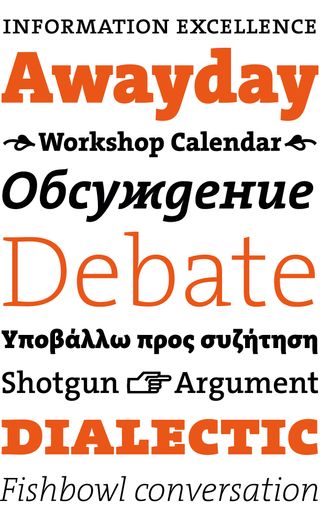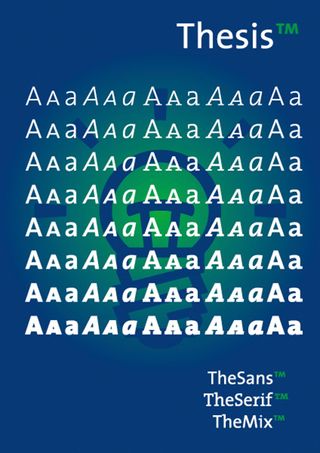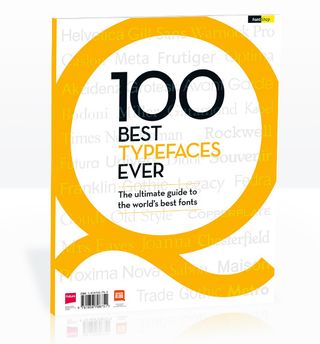Greatest fonts countdown: 89 - Thesis
We're counting down the 100 greatest typefaces in existence. Here is number 89...
FontShop AG, the renowned type foundry, conducted a survey based on historical relevance, sales at FontShop.com, and aesthetic quality. With a few additions from the experts at Creative Bloq and Computer Arts magazine, the best fonts ever were selected for the new book, 100 Best Typefaces Ever.
Here we are counting down the 100 greatest fonts, but you can read interviews with some of the typefaces' creators, a brief history of type, the anatomy of a font, and much, much more in the book – find out how to get your copy in print or digital formats at the foot of this post.
But without further ado, here is the 89th best typeface…
89. Thesis

- Lucas de Groot, 1994
Renowned typographer Lucas Adrianus Wilhelmus de Groot really wanted to be a painter – but his work had always been focused on graphics. His career in typography started when he was at school in Noordwijkerhout where he became annoyed and frustrated by the bad typography used in the school magazine. He decided he would do something about it, immediately posting his suggestions for improvement under the editor's door. By the following day he was on the editorial team.
From 1982 to 1987, de Groot studied under Gerrit Noordzij at the Royal Academy of Art in The Hague – a hot-bed for new typographers. He specialised in typography, photography and illustration and his final piece of work was produced entirely in typefaces that he had designed himself – among them an early version of what later became his successful Thesis typeface (at that time still called 'Paranthesis').
Between 1989 and 1993, de Groot worked for the respected design agency BRS Premsela Vonk on large corporate design projects. It was here that he laid the foundations for TheMix, Thesis' semi-serif version, which became the corporate font of the Dutch Ministry of Transport and Water Management.
When he came to Germany in 1993 and joined MetaDesign in Berlin, he finally had time to finish Thesis with its three families – TheSans (sans-serif), TheSerif (slab serif), and TheMix (slab serif): "I couldn't speak the language yet and I hardly knew anybody, so I took the time to complete Thesis," he recalls.
Get the Creative Bloq Newsletter
Daily design news, reviews, how-tos and more, as picked by the editors.
By 1994, Thesis had become a bestselling member of the FontFont Library. Despite the popularity of Adobe's multiple-master fonts, which made it possible for ordinary users to generate custom fonts very easily, many type enthusiasts favoured FF Thesis with its 144 fonts. One reason for this was undoubtedly the eight carefully harmonised font weights, which Lucas de Groot had developed with typographic sensitivity on the basis of his own interpolation theory. In addition to this, Thesis' range of characters was unrivalled at that time. It remains a classic type system, with TheSans being particularly versatile with its monospaced, hairline, typewriter and Arabic versions.


The 100 Best Typefaces Ever

This is an extract from The 100 Best Typefaces Ever, the definitive guide to the greatest fonts ever created, in association with FontShop AG. Over 180 premium pages, the book dissects the world's greatest typefaces, bringing you some insightful background on each and interviews with their creators.
You can pick up the book at all good newsagents today or order it online. Or you can download a digital edition directly to your iPad from the Computer Arts app on iTunes.

Thank you for reading 5 articles this month* Join now for unlimited access
Enjoy your first month for just £1 / $1 / €1
*Read 5 free articles per month without a subscription

Join now for unlimited access
Try first month for just £1 / $1 / €1
Rob is editorial, graphic design and publishing lead at Transport for London. He previously worked at Future Publishing over the course of several years, where he launched digital art magazine, ImagineFX; and edited graphic design magazine Computer Arts, as well as the Computer Arts Projects series, and was also editor of technology magazine, T3.
